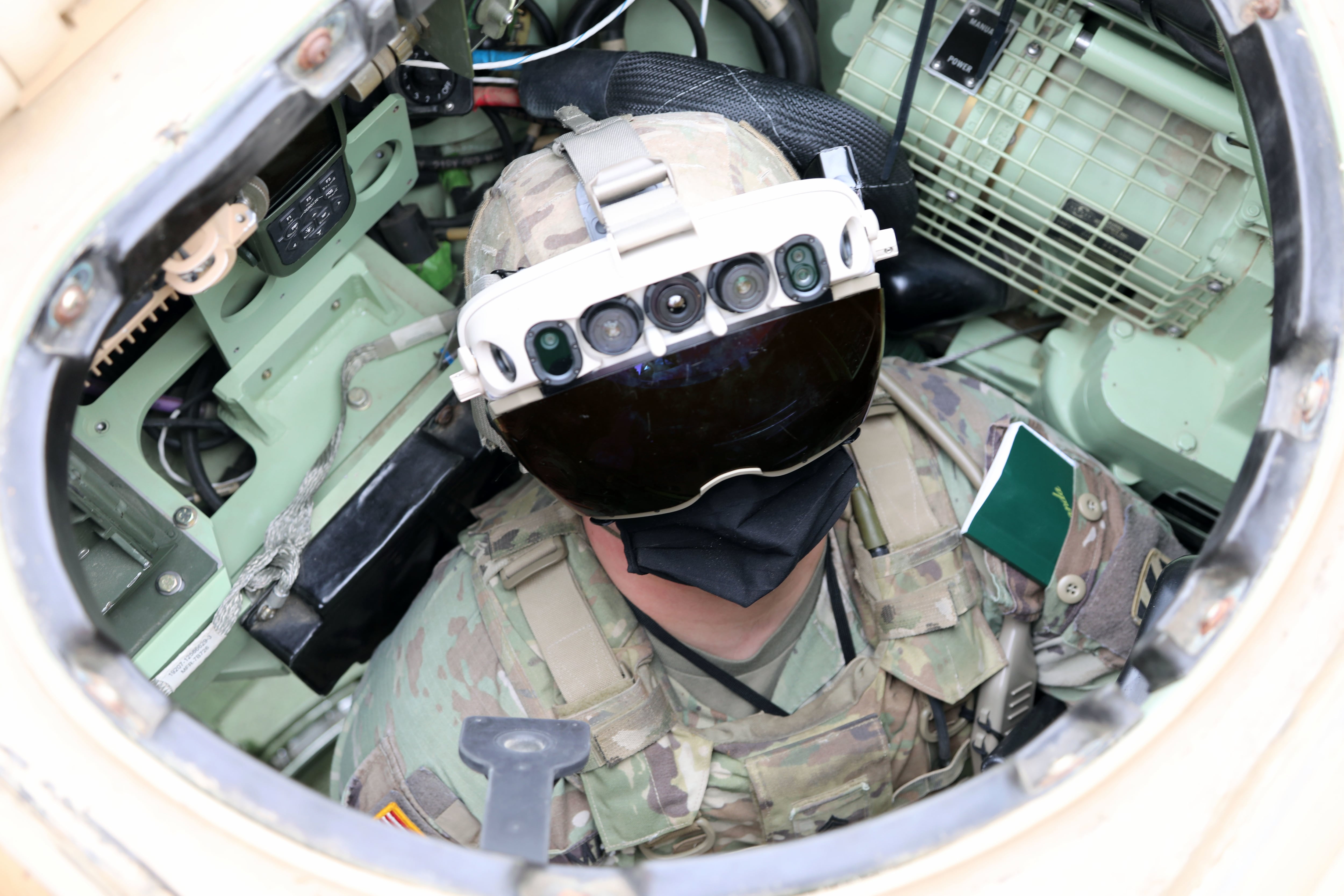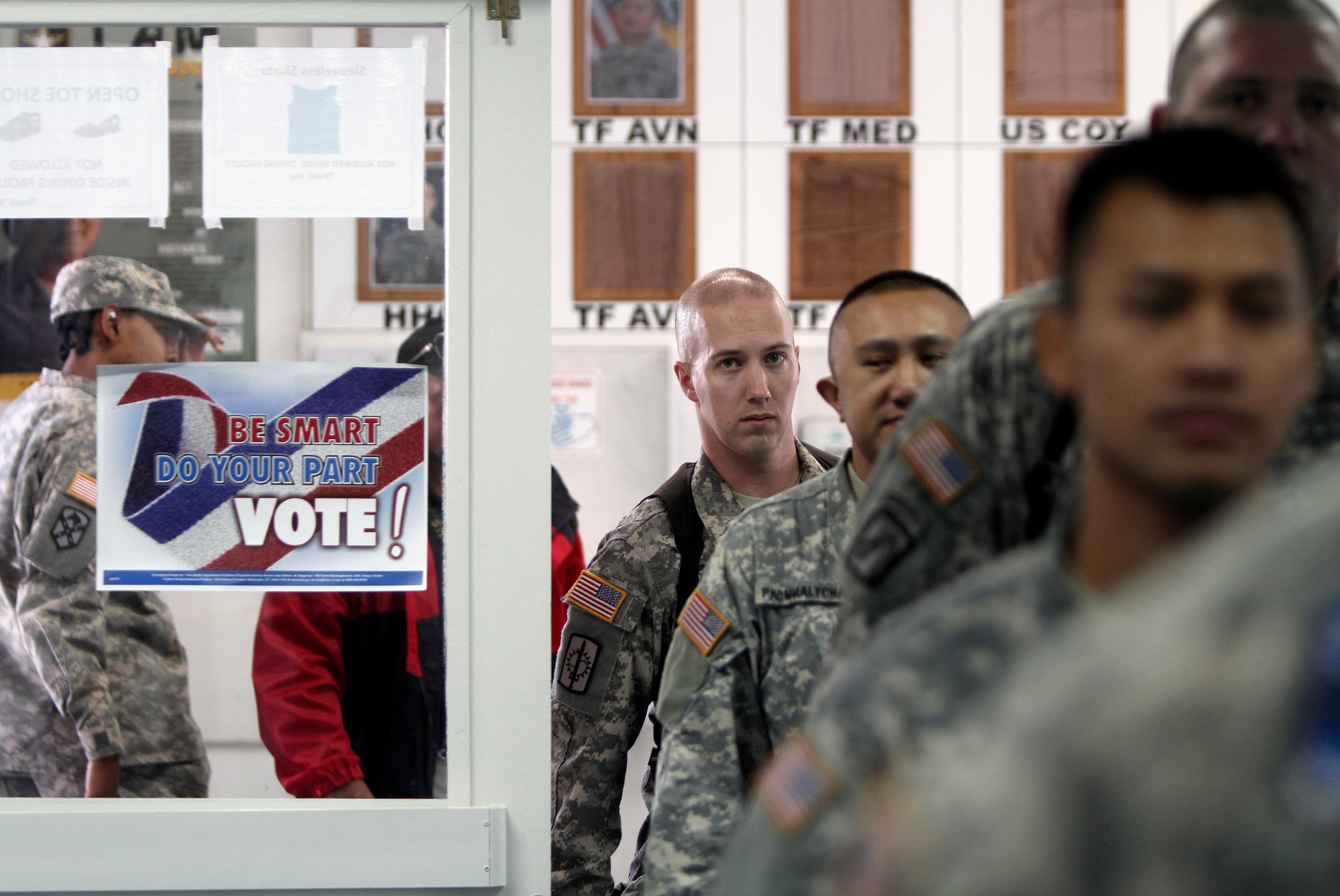WASHINGTON — Imagine getting a 3-D layout of a target building piped into your goggles on a heads-up display before you and your teammates kick the door in and clear the rooms.
That future could become reality with the Army’s Integrated Visual Augmentation System, basically a “do-it-all” goggle for troops.
The IVAS’ early versions were developed using Microsoft’s HoloLens augmented reality headset.
But a newly ruggedized system has been used by soldiers all the way up to company-level live fires as recently as last year.
In late September, Army experiments evaluated how well the current radios used by troops could work when combined with IVAS.
Those radios are key to passing data between IVAS and the company-level cloud storage, as well as other devices troops are using.
But further maturation of the heads-up display portion is required. That next step will come later in fiscal year 2022, according to Maj. Gen. Anthony Potts, commander of Program Executive Office-Soldier and Brig. Gen. Larry Burris, director of the Army’s Cross Functional Team-Soldier Lethality.
Potts told Army Times that IVAS goggles have been worked through his command’s Soldier Integration Facility — a test area where soldiers get to try out new technologies early in the development process.
The two-star said that developers want to mature the heads-up display before moving forward with the project.
“It’s very interesting, we have found working with [the Army’s] Night Vision Labs that this is one of those [things] where we are really out in front of the technology curve,” Potts said.
The IVAS program will conduct a user trial in January 2022 on the newest, ruggedized design that is being built.
“We know we want this newer design for the baseline [model],” Potts said. And if those trials work out, operational tests of the IVAS are planned for later in 2022, he added.
In March 2021, the Army announced a $21.8 billion contract with Microsoft.
The initial purchase includes 40,000 devices.
The IVAS is how the Army will move situational awareness and targeting — like what jet pilots have had for years — into the eyes of dismounted soldiers roaming the battlefield.
Plans call for IVAS to include rapid targeting acquisitions, thermal and night vision capabilities, navigation headings, mapping, markers, data sharing and more.
The current IVAS prototype weighs 2.5 pounds, the same weight as the newly fielded Enhanced Night Vision Goggle-Binocular.
It also has recording capabilities for instant after-action videos and it uses the existing tactical assault kit — a smartphone-based app — as its off-board computer.
Network capabilities allow the device to share data within the squad, platoon, company or even a mission headquarters.
Company-level cloud services called “bloodhound” share, store and route the data from each soldier into the larger Army network for information dissemination.
Developers are even testing out 3-D mapping scans of building interiors, which could be sent into the IVAS, allowing assaulters to see the layout before they move in for close-quarters combat.
Todd South has written about crime, courts, government and the military for multiple publications since 2004 and was named a 2014 Pulitzer finalist for a co-written project on witness intimidation. Todd is a Marine veteran of the Iraq War.




